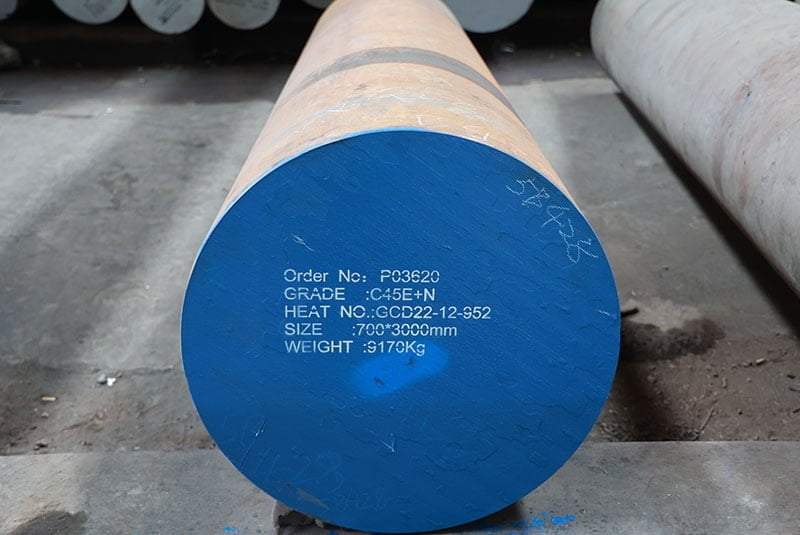Welcome to My Blog!
Before we dive into the content, I’d love for you to join me on my social media platforms where I share more insights, engage with the community, and post updates. Here’s how you can connect with me:
Facebook:https://www.facebook.com/profile.php?id=100085401406977
LinkedIn:https://www.linkedin.com/showcase/102680001/admin/dashboard/
Now, let’s get started on our journey together. I hope you find the content here insightful, engaging, and valuable.
Table of Contents
Introduction
Carbon steel is a fundamental material in various industries, known for its strength, versatility, and affordability. However, understanding the different classifications of carbon steel is crucial for engineers, manufacturers, and anyone involved in metalworking. This blog post delves into carbon steel classification, providing insights into its types, properties, and applications. By the end of this article, you will have a comprehensive understanding of carbon steel classifications and their significance in real-world applications.
What is Carbon Steel?

Carbon steel is an alloy of iron and carbon, where the carbon content typically ranges from 0.05% to 2.0%. This classification plays a vital role in determining the material’s properties and performance. Carbon steel is categorized based on its carbon content, which affects its strength, ductility, and hardness.
Types of Carbon Steel Classification
Carbon steel can be classified into three primary categories based on its carbon content: low carbon steel, medium carbon steel, and high carbon steel. Each type has unique characteristics that make it suitable for specific applications.
Low Carbon Steel Classification
Low carbon steel, also known as mild steel, contains a carbon content of up to 0.3%. This type of carbon steel is known for its excellent ductility and weldability, making it ideal for applications such as:
- Structural components
- Automotive body parts
- Pipes and tubes
Low carbon steel is widely used in construction and manufacturing due to its balance of strength and flexibility.
Medium Carbon Steel Classification
Medium carbon steel contains carbon content ranging from 0.3% to 0.6%. This classification offers a balance between ductility and strength, making it suitable for applications that require both properties. Common uses include:
- Gears
- Axles
- Forgings
Medium carbon steel is often used in manufacturing processes that require a combination of strength and workability.
High Carbon Steel Classification
High carbon steel contains carbon content ranging from 0.6% to 2.0%. This classification provides high strength and hardness but at the cost of ductility. High carbon steel is typically used in applications that demand exceptional wear resistance and strength, such as:
- Cutting tools
- Springs
- High-strength wires
Understanding high carbon steel classification is essential for industries that require durable and resilient materials.
Properties of Carbon Steel
The properties of carbon steel vary based on its classification. Here’s a summary of the mechanical properties associated with each type:
| Carbon Steel Classification | Carbon Content (%) | Hardness | Ductility | Weldability |
|---|---|---|---|---|
| Low Carbon Steel | Up to 0.3 | Low | High | Excellent |
| Medium Carbon Steel | 0.3 – 0.6 | Moderate | Moderate | Good |
| High Carbon Steel | 0.6 – 2.0 | High | Low | Poor |
This table illustrates the key differences in properties based on carbon content, helping you choose the right type for your specific needs.
Applications of Carbon Steel Classification

Understanding the applications of different carbon steel classifications can help industries select the appropriate material for their projects. Here are some key applications for each type:
Low Carbon Steel Applications
- Construction: Widely used for beams, columns, and frames due to its strength and workability.
- Automotive: Common in car bodies and chassis, where flexibility and ease of welding are important.
Medium Carbon Steel Applications
- Machinery: Used in manufacturing machinery components that require a balance of strength and ductility.
- Transportation: Common in the production of automotive components like axles and gears.
High Carbon Steel Applications
- Cutting Tools: Essential for the production of knives, blades, and cutting instruments.
- Springs: Used in the manufacturing of springs that require high strength and durability.
Conclusion
Understanding carbon steel classification is crucial for anyone involved in engineering, manufacturing, or construction. By recognizing the differences between low, medium, and high carbon steel, professionals can make informed decisions regarding material selection for their specific applications. Whether it’s low carbon steel for flexibility, medium carbon steel for balanced performance, or high carbon steel for strength, knowing the characteristics and uses of each classification ensures optimal results in projects.
FAQ
What is the primary difference between low, medium, and high carbon steel classifications?
The primary difference lies in the carbon content, which affects the material’s properties such as hardness, ductility, and weldability. Low carbon steel has the least carbon content and is highly ductile, while high carbon steel has the highest carbon content and offers superior hardness but lower ductility.
Can carbon steel be welded?
Yes, carbon steel can be welded, but the ease of welding varies by classification. Low carbon steel is excellent for welding, while high carbon steel may require preheating and specific techniques to avoid cracking.
What are some common uses for medium carbon steel?
Medium carbon steel is commonly used in gears, axles, and forgings, where a balance of strength and ductility is essential.
Is carbon steel corrosion-resistant?
Carbon steel is prone to corrosion; therefore, it often requires protective coatings or treatments to enhance its resistance to environmental factors.
How can I determine the right carbon steel classification for my project?
Consider the specific requirements of your project, such as strength, ductility, and weldability. Evaluate the properties and applications of each classification to select the most suitable type for your needs.
